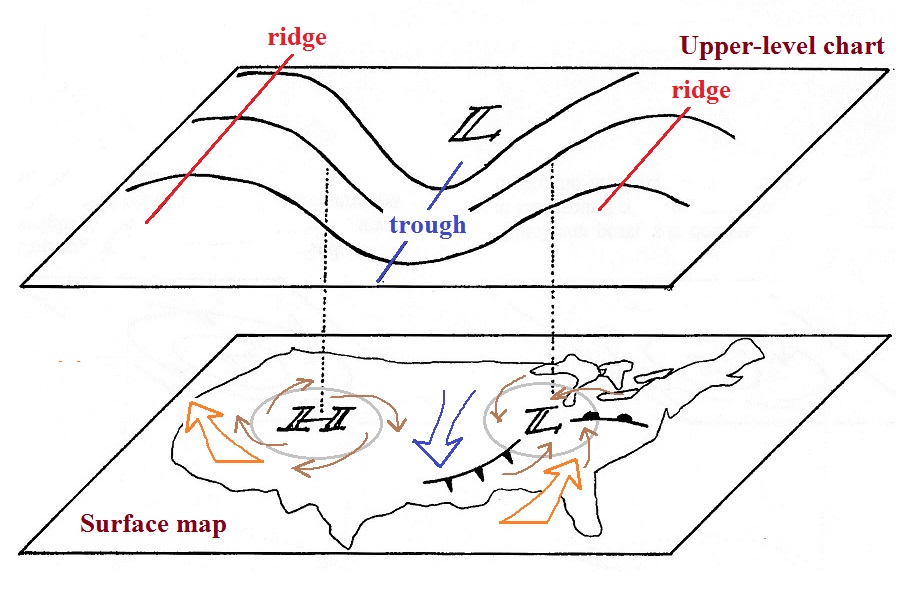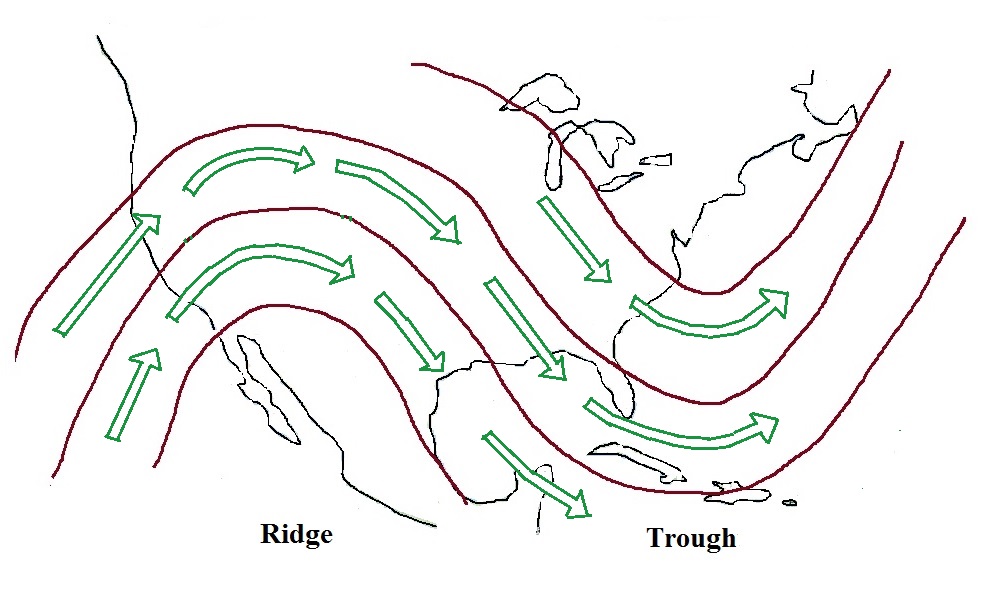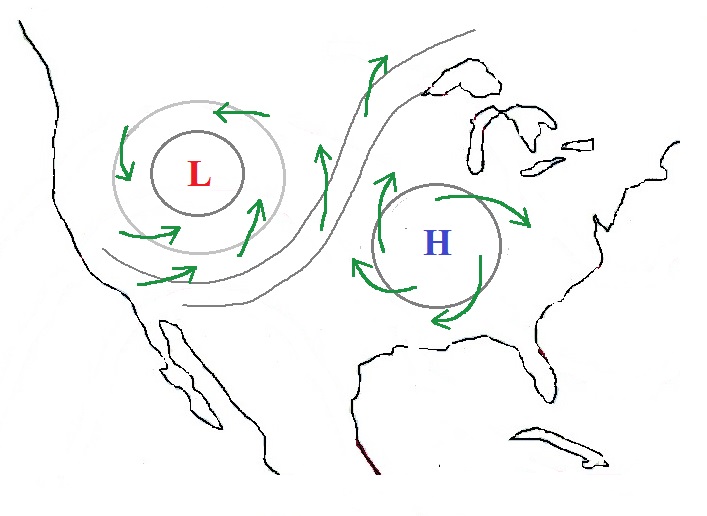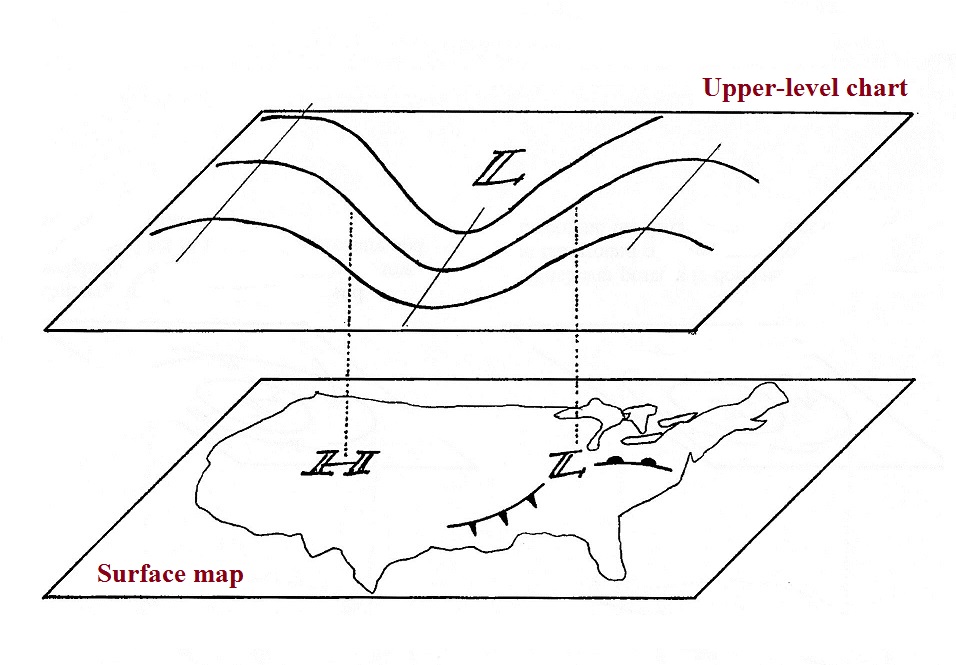
In this first section we'll
just learn 3 basic facts about upper level charts. First
the overall appearance is somewhat different from a surface
weather map. The pattern on a surface map can be complex
and you generally find circular (more or less) centers of high
and low pressure (see the bottom part of the figure
below). You can also find closed high and low pressure
centers at upper levels, but mostly you find a relatively
simple wavy pattern like is shown on the upper portion of the
figure below (sort of a 3-dimensional view). The figure
below is on page 42
in the Class Notes.

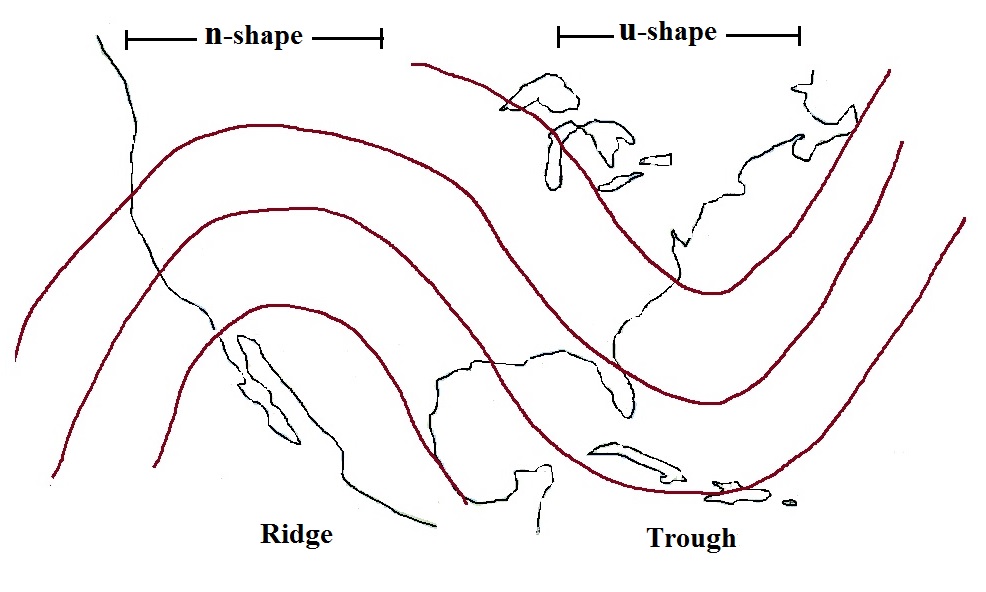
The u-shaped portion
of the pattern is called a trough. The n-shaped portion is called
a ridge.

Troughs are produced by large volumes of cool or cold
air (the cold air is found between the ground and the upper
level that the map depicts). The eastern half of the
country in the map above would probably be experiencing colder
than average temperatures. Large volumes of warm or hot
air produce ridges. We'll see why this is true in the
2nd part of the supplementary reading material.
| The 10 am MST 500 mb upper level chart
for Monday, Oct. 15, 2018. Note the trough
positioned over the western states. This feature is partly responsible for the wetter- and cooler-than-average weather we have been experiencing. |
| 11 am surface temperatures for Monday,
Oct. 15, 2018. The western 2/3rds of the US are
under an upper level trough. Temperatures in
Arizona, New Mexico, and western Texas are in the 30s and
40s. The eastern 1/3rd of the country is under the
the edge of a ridge and is considerably warmer.
Temperatures in Mississippi, Alabama, and Georgia are in
the 80s. |
We can begin to see how surface features can influence the upper level pattern in the map below.
